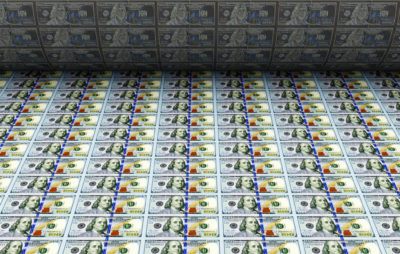Evaluating quantitative easing
This piece was originally published in Alt-M
By Gerald P. O’Driscoll
In my prior post, “The Futility of Stimulus,” I examined whether Federal Reserve Policy has provided economic stimulus. I employed standard measures of money-supply growth to evaluate the question. I concluded that Federal Reserve policy has resulted in less expansion of the money supply than would normally be expected. The weakness of the current economic expansion testifies to that.
In this post, I employ an alternative measure of monetary stimulus. I rely on a recent lecture at the University of Nevada Reno by Professor John Taylor of Stanford University. With a series of charts, he made a convincing case that successive rounds of Quantitative Easing provided no monetary stimulus. Taylor looked at the interest-rate channel, particularly longer-term interest rates. If monetary policy stimulates the economy through real capital investment, then we must look to longer-term interest rates.
Taylor specifically examined the effects on 10-year Treasury yields of each round of Quantitative Easing by the Fed. In each case, there was an announcement effect. When the Fed announced a new round of bond purchases, interest rates on 10-year Treasuries did drop. As QE was executed, however, the 10-year rate recovered to its previous level or even moved higher. On the assumption that rates on corporate bonds price off Treasuries, there was no measureable effect on investment and economic growth. Again, the weakness of the economic expansion is consistent with Taylor’s argument.
There is policy background here. Taylor is the author of a monetary rule, which others have dubbed the Taylor Rule. It is a rule for adjusting short-term interest rates (the Fed Funds rate) to changes in inflation and real economic activity. The Taylor Rule calculates that the Fed Funds should by 1.5 percent versus the current reality of near-zero. Taylor did not advocate an immediate increase to that level, but the beginning of gradual increases.
What of the economic recovery? If Taylor is correct, then low short-term interest rates have not contributed to the economic expansion and raising them will not slow economic growth.
Have very low short-term interest rates had any effect? Janet Yellen recently hinted they might have contributed to unsustainably high equity prices. I will not argue with the Fed Chair on that point, but only suggest that other financial bubbles may also have been financed by Fed policy. To repeat a hackneyed phrase (nonetheless accurate), Wall Street has benefitted but not Main Street.
To sum up, following Taylor’s analysis of the interest-rate channel, I conclude that Fed policy has not stimulated economic growth. It has had consequences, which some would consider undesirable. Taylor has provided a reasonable case for beginning to raise interest rates. I doubt that will happen soon. But the debate should continue.








